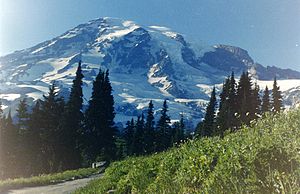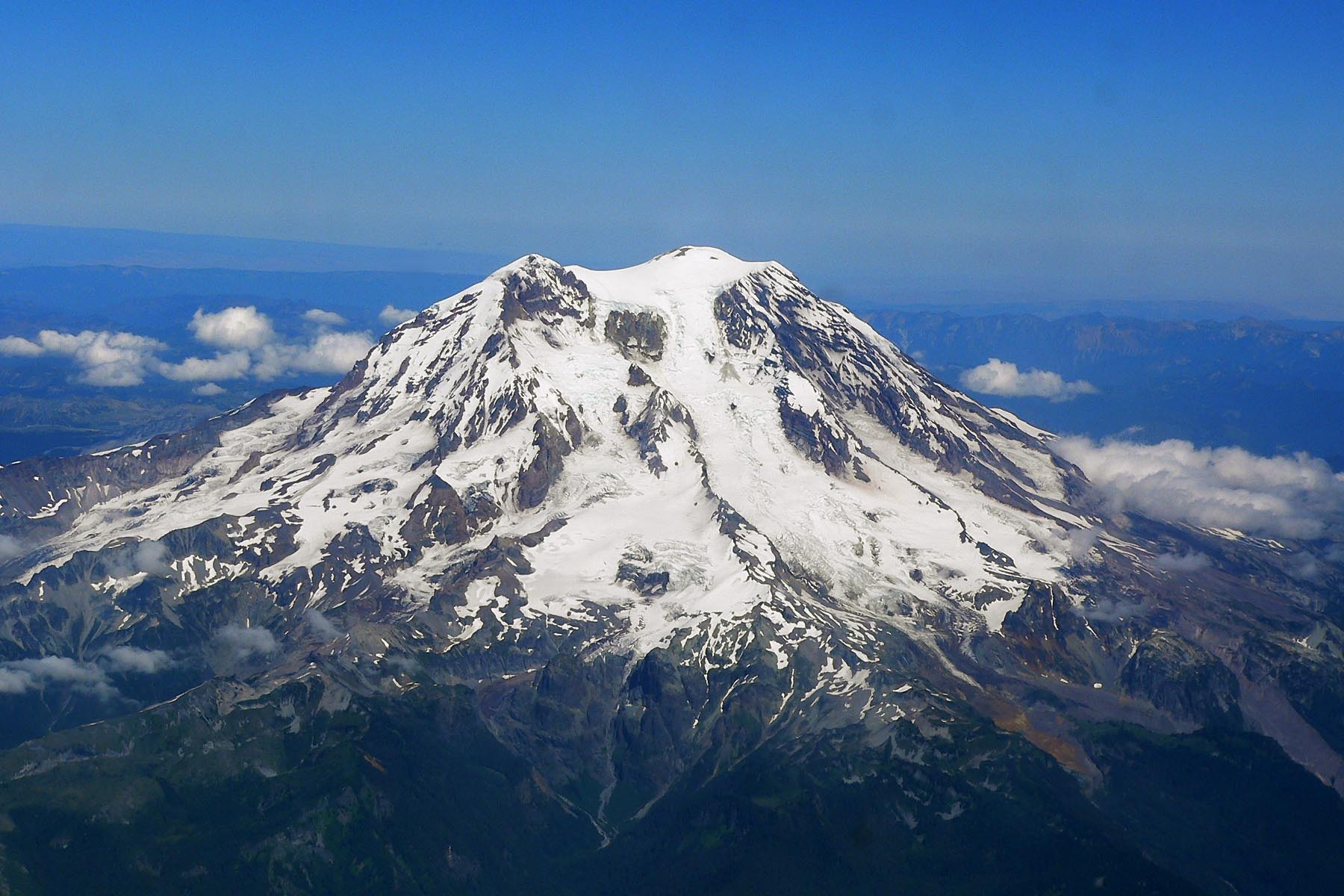F. L. Boschke’s book “THE UNEXPLAINED”, Pages 103-105, contains the following interesting story:

“It is understandable that when volcanoes are inactive, they are covered with snow and ice. Many volcanoes rise out of “the eternal ice”. One of the tallest volcanoes in the world is Mount Rainier, in Washington, in the northwestern United states. This mountain, which lies south of the port of Seattle, is 14,000 feet high and naturally the top of it is covered with ice. However, there is something strange about this ice. If Jules Verne had known about Mount Rainier, he would have made it the place where the travelers entered the earth in his science-fiction novel JOURNEY TO THE CENTER OF THE EARTH. In this mountain, volcanic forces struggle with the eternal ice, and the result is a phenomenon unique on this earth.
For hundreds of years people had heard that the ice cap of Mount Rainier concealed a secret, a maze of corridors and caves. But not until 1970 did scientists begin a systematic investigation. It was necessary for them to do so, for shortly before, seismographs had recorded violent earthquakes in the gigantic crater of Mount Rainier, and indications were that the heat in the cone was increasing. The danger was obvious. If the ice melted, some 4,000,000 cubic yards of water would flow down the slopes from each of the two craters at the top of Mount Rainier. The water would tear stones, rocks, pebbles, and mud from the mountainside, trigger landslides, fill up the valleys, melt glaciers, and in general threaten everyone who lived nearby.
In August, 1970, an expedition climbed to the top of the eastern-most of the two craters. When they arrived, instead of the crater they saw a round hole one thousand feet wide and five hundred feet deep, filled with snow and ice. In the white mass they found three large holes sloping downward from the inner wall of the crater. The holes sloped downward at an angle of between thirty-five and forty degrees. The descent was difficult and dangerous. Deep in the crater there were corridors in the ice, some of them as much as thirty feet wide and almost fifteen feet in height. The members of the expedition took the danger in stride and continued to descend. The adventure led them into a cave of large and small corridors, some of which branched off and then met again at some other point. It was less like a maze than a system of tunnels. Some corridors led directly to the center of the crater; other dark passages led to dead ends. At a certain depth the explorers found a broad “highway” which sometimes widened into a hall and which followed the circumference of the crater wall. This “highway” alone was over a half-mile in length. For the most part, the floor of the passages was damp, muddy, and strewn with broken rock.
The system of tunnels was filled with strange and threatening noises. Hot steam piped, gurgled, and hissed from hundreds of places in the ground, carving its way through mud and potholes and melting the ice on the walls and ceilings, which dripped continuously onto the ground. At other points there were streams of foul-smelling, poisonous gases. In many places the path was not only dark but shrouded with clouds of vapor which concealed everything from view. All the moisture the crater contained rained down into the depths. Apparently a pond or a lake is located somewhere deep inside this underworld.
A warm draft was blowing even at the tunnel entrances, more than 13,000 feet high in the crater wall. The temperature was 40 C. But on top of everything else, it was hot inside the tunnel system! The steam in the corridors was as hot as 560 C, and at one point the temperature of the rocky floor was 860 C.
Struggling against the heat, vapor, water, and gas, the geologists recorded, measured, and made charts of what they found. They marveled at the steep descents and at the cathedral-like grottoes which had been melted out of the ice. At one point, when the ice above them was four hundred feet thick, they made two amazing discoveries. On the ground before them lay the remains of a bird which as a rule inhabits the coast sixty miles away, and above them in the icy ceiling of the corridor they found a red woolen glove!
Mysterious discoveries ought to occur in an adventure, and this adventure had its share. Up above, at the edge of the crater, the explorers found the remains of another bird. Could a storm carry birds as high as the top of the crater? Perhaps, like the glove, it was brought there by some mountain-climber long ago, Or perhaps the bird and the glove once lay on top of the crater ice, until snow covered them and the heat of the crater melted the ice, allowing both objects to slowly sink into the depths, covered with new layers of snow and ice. This may well be the case.
However, no one doubts that Mount Rainier still contains many secrets and that there may be other explanations for the presence of the glove and the bird.
Still another mystery of Mount Rainier is the question of what happens to all the water that continually streams into the depths of the crater.
Related articles






